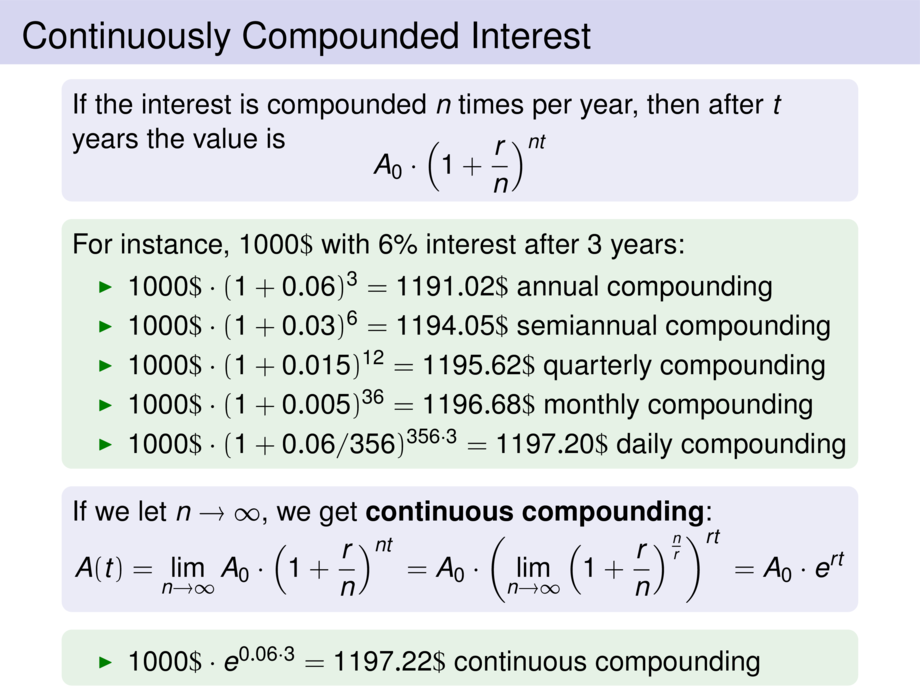



































































































99/99
\begin{frame}
\frametitle{Continuously Compounded Interest}
\vspace{-.5ex}
\begin{block}{}
If the interest is compounded $n$ times per year,
then after $t$ years the value is\vspace{-2.5ex}
\begin{talign}
A_0 \cdot \left(1+\frac{r}{n}\right)^{nt}
\end{talign}
\end{block}
\pause
\begin{exampleblock}{}
For instance, $1000\$$ with 6\% interest after $3$ years:
\begin{itemize}
\pause
\item $1000\$ \cdot (1 + 0.06)^3 = 1191.02\$$ annual compounding
\pause
\item $1000\$ \cdot (1 + 0.03)^6 = 1194.05\$$ semiannual compounding
\pause
\item $1000\$ \cdot (1 + 0.015)^{12} = 1195.62\$$ quarterly compounding
\pause
\item $1000\$ \cdot (1 + 0.005)^{36} = 1196.68\$$ monthly compounding
\pause
\item $1000\$ \cdot (1 + 0.06/356)^{356\cdot 3} = 1197.20\$$ daily compounding
\end{itemize}
\end{exampleblock}
\pause
\begin{block}{}
If we let $n \to \infty$, we get \emph{continuous compounding}:\vspace{-1ex}
\begin{talign}
A(t) = \lim_{n\to \infty} A_0 \cdot \left(1+\frac{r}{n}\right)^{nt}
\mpause[1]{= A_0 \cdot \left( \lim_{n\to \infty} \left(1+\frac{r}{n}\right)^\frac{n}{r} \right)^{rt} }
\mpause[2]{= A_0 \cdot e^{rt} }
\end{talign}
\end{block}
\pause\pause\pause
\begin{exampleblock}{}
\begin{itemize}
\item $1000\$ \cdot e^{0.06\cdot 3} = 1197.22\$$ continuous compounding
\end{itemize}
\end{exampleblock}
\end{frame}

